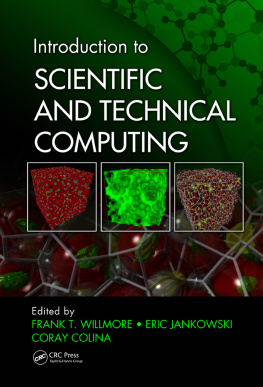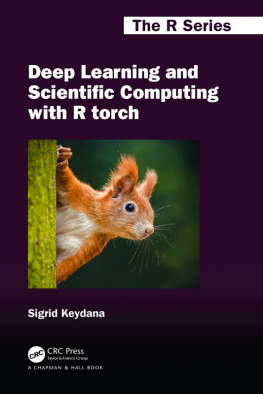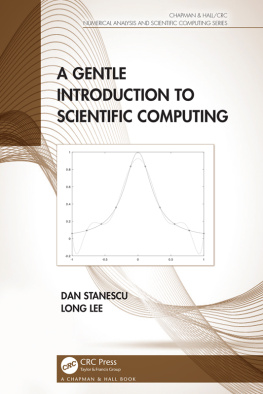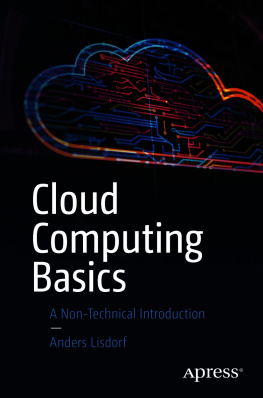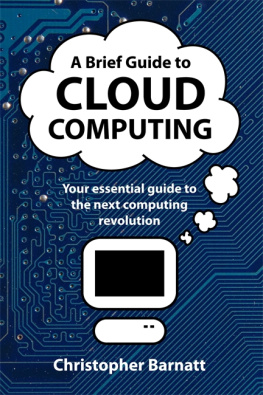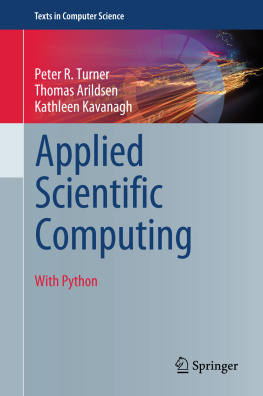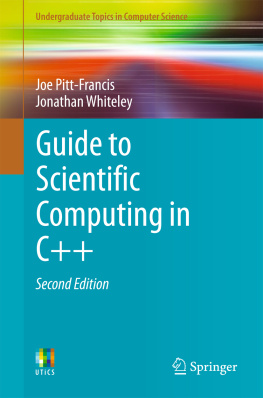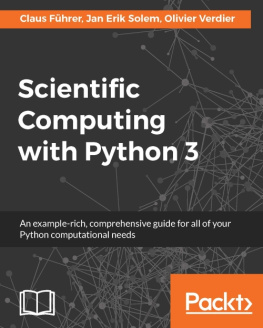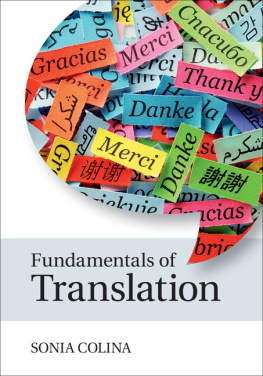Colina Coray - Introduction to scientific and technical computing
Here you can read online Colina Coray - Introduction to scientific and technical computing full text of the book (entire story) in english for free. Download pdf and epub, get meaning, cover and reviews about this ebook. year: 2016, publisher: CRC Press, genre: Computer. Description of the work, (preface) as well as reviews are available. Best literature library LitArk.com created for fans of good reading and offers a wide selection of genres:
Romance novel
Science fiction
Adventure
Detective
Science
History
Home and family
Prose
Art
Politics
Computer
Non-fiction
Religion
Business
Children
Humor
Choose a favorite category and find really read worthwhile books. Enjoy immersion in the world of imagination, feel the emotions of the characters or learn something new for yourself, make an fascinating discovery.
- Book:Introduction to scientific and technical computing
- Author:
- Publisher:CRC Press
- Genre:
- Year:2016
- Rating:5 / 5
- Favourites:Add to favourites
- Your mark:
- 100
- 1
- 2
- 3
- 4
- 5
Introduction to scientific and technical computing: summary, description and annotation
We offer to read an annotation, description, summary or preface (depends on what the author of the book "Introduction to scientific and technical computing" wrote himself). If you haven't found the necessary information about the book — write in the comments, we will try to find it.
Introduction to scientific and technical computing — read online for free the complete book (whole text) full work
Below is the text of the book, divided by pages. System saving the place of the last page read, allows you to conveniently read the book "Introduction to scientific and technical computing" online for free, without having to search again every time where you left off. Put a bookmark, and you can go to the page where you finished reading at any time.
Font size:
Interval:
Bookmark:

Introduction to
SCIENTIFIC AND TECHNICAL COMPUTING
Introduction to
SCIENTIFIC AND TECHNICAL COMPUTING
Edited by
FRANK T. WILLMORE ERIC JANKOWSKI CORAY COLINA

CRC Press
Taylor & Francis Group
6000 Broken Sound Parkway NW, Suite 300
Boca Raton, FL 33487-2742
2017 by Taylor & Francis Group, LLC
CRC Press is an imprint of Taylor & Francis Group, an Informa business
No claim to original U.S. Government works
Printed on acid-free paper
Version Date: 20160525
International Standard Book Number-13: 978-1-4987-4504-8 (Paperback)
This book contains information obtained from authentic and highly regarded sources. Reasonable efforts have been made to publish reliable data and information, but the author and publisher cannot assume responsibility for the validity of all materials or the consequences of their use. The authors and publishers have attempted to trace the copyright holders of all material reproduced in this publication and apologize to copyright holders if permission to publish in this form has not been obtained. If any copyright material has not been acknowledged please write and let us know so we may rectify in any future reprint.
Except as permitted under U.S. Copyright Law, no part of this book may be reprinted, reproduced, transmitted, or utilized in any form by any electronic, mechanical, or other means, now known or hereafter invented, including photocopying, microfilming, and recording, or in any information storage or retrieval system, without written permission from the publishers.
For permission to photocopy or use material electronically from this work, please access www.copyright.com (http://www.copyright.com/) or contact the Copyright Clearance Center, Inc. (CCC), 222 Rosewood Drive, Danvers, MA 01923, 978-750-8400. CCC is a not-for-profit organization that provides licenses and registration for a variety of users. For organizations that have been granted a photocopy license by the CCC, a separate system of payment has been arranged.
Trademark Notice: Product or corporate names may be trademarks or registered trademarks, and are used only for identification and explanation without intent to infringe.
Library of Congress Cataloging-in-Publication Data
Names: Willmore, Frank T., author. | Jankowski, Eric, author. | Colina, Coray, author.
Title: Introduction to scientific and technical computing / Frank T. Willmore, Eric Jankowski, and Coray Colina.
Description: Boca Raton : Taylor & Francis, CRC press, 2017. | Includes bibliographical references and index.
Identifiers: LCCN 2016006492 | ISBN 9781498745048 (alk. paper)
Subjects: LCSH: Engineering--Data processing. | Science--Data processing. | Research--Data processing.
Classification: LCC TA345 .W545 2017 | DDC 502.85--dc23
LC record available at http://lccn.loc.gov/2016006492
Visit the Taylor & Francis Web site at
http://www.taylorandfrancis.com
and the CRC Press Web site at
http://www.crcpress.com
Contents
Erik E. Santiso
Frank T. Willmore
Chris Ertel
Erik E. Santiso
Frank T. Willmore
Frank T. Willmore
Frank T. Willmore
Ryan L. Marson and Eric Jankowski
Brian C. Barnes and Michael S. Sellers
Charles Lena
Todd Evans
Jerome Vienne
Yaakoub El Khamra
Frank T. Willmore
Victor Eijkhout
nan enocak and Haoqiang Jin
Paul Kwiatkowski
Christopher R. Iacovella, Christoph Klein, Janos Sallai, and Ahmed E. Ismail
Paul Saxe
In the relatively brief history of electronic computersroughly seven decadeswe have seen exponential increases in capability and reductions in cost and size, enabled by tremendous advances in technology. These exponential rates of change in capability and cost-efficiency produced the PC revolution, and now the post-PC revolution of smartphones and other smart mobile devices, and are now driving us toward an Internet of Things in which computing devices of all types will be ever-present in our homes, cities, transportation, and perhaps even clothes and bodies. It is easy to understand how computing could now be taken for granted. Computing devices are now pervasive; they are not only on our desks and in our laps, but in our cars and appliances, in our pockets, and even on our wrists. Most people interact with computers daily, hourly, or even constantly for enjoyment or for productivity, without ever really pausing to wonder how they work. In fact, the term computer isnt even applied generally to most of the computers in our lives. This is perfectly fine, for the most part. However, computers are also important instruments of science and engineering, necessary for helping us make new discoveries and innovations. For scientists, engineers, and other technical professionals in universities, labs, and companies, computers are increasingly powerful tools for research and development (R&D). Sometimes, very powerful computersoften called supercomputersmake headlines for their role in enabling groundbreaking research. Mostly, however, scientific computing systems are out of the public awareness, even more invisible than the pervasive devices we use daily.
The tremendous success of computing in supporting our businesses, running our infrastructure, and enriching our lives has created a huge demand for computing professionals in companies that provide these products and services. The business and consumer markets need experts in cloud computing, data analytics, web services, mobile applications, devices, networking, and so on. The explosion in business- and consumer-focused computing during the past two decadessince the World Wide Web made computing access desirable to everyonehas dominated the market for programmers, and thus changed the focus on computer science programs. The days of scientific computing skills and technologies being the foundation of computer science curricula are long gone, even though computing is also more important than ever in science and engineering. The majority of computer science curricula has understandably evolved with markets for computing technologies. In 2016, essentially all college and graduate students can take courses for programing in Java or for understanding web services, but few can take science-focused programming classes to learn the new version of Fortran or how to use C/C++ for scientific applications. Fewer still can take classes to learn how to use OpenMP and MPI to create high-performance scientific and engineering applications that run on parallel computing systems.
For these reasons, I created and started teaching a course on parallel computing for scientists and engineers when I worked at the San Diego Supercomputer Center (SDSC) in the late 1990s, and taught it at both the University of California, San Diego (UCSD) and SDSU. The class was based on a 2 to 3 day workshop we offered to SDSC users, most of whom were faculty and postdocs who needed supercomputers in their research but had no formal education on how to use them. Shortly after I founded the Texas Advanced Computing Center (TACC) at The University of Texas (UT) in 2001, we started teaching a similar class at UTand then discovered the need for additional, more basic scientific computing classes on programing in Fortran and C, performance optimization, visualization, data management, and other scientific computing skills. At TACC, we were at the forefront of computational science, and we volunteered our time to share our expertise by teaching classes so students could learn these skills, which were not addressed by the computer science curriculum. Our scientific computing curriculum courses were electives for students, but they increased in popularity as students in science and engineering programs at UT realized the need for such skills and understanding to pursue their degrees, especially in graduate research. The classes filled a gap in the curriculum for future scientists and engineers in training, and our course slides filled the gap normally addressed by textbooks.
Font size:
Interval:
Bookmark:
Similar books «Introduction to scientific and technical computing»
Look at similar books to Introduction to scientific and technical computing. We have selected literature similar in name and meaning in the hope of providing readers with more options to find new, interesting, not yet read works.
Discussion, reviews of the book Introduction to scientific and technical computing and just readers' own opinions. Leave your comments, write what you think about the work, its meaning or the main characters. Specify what exactly you liked and what you didn't like, and why you think so.

